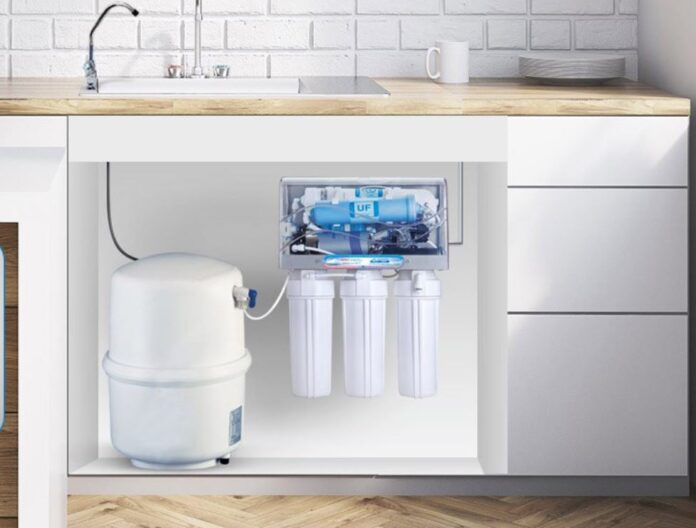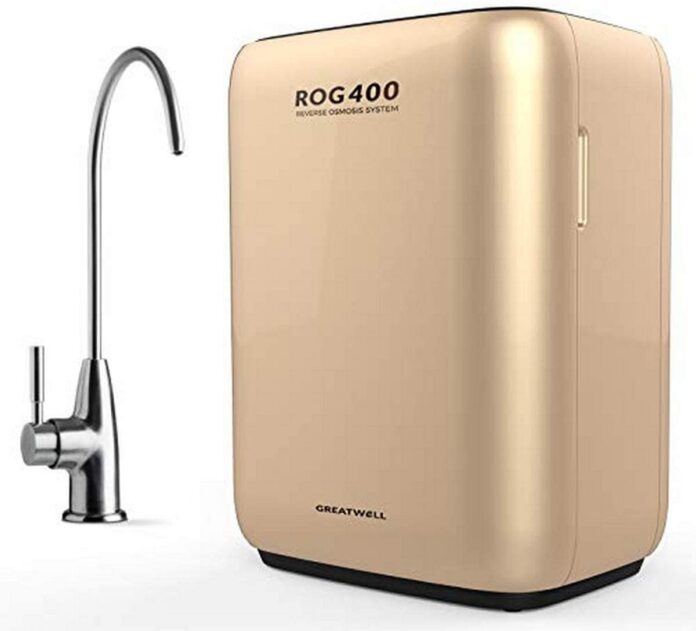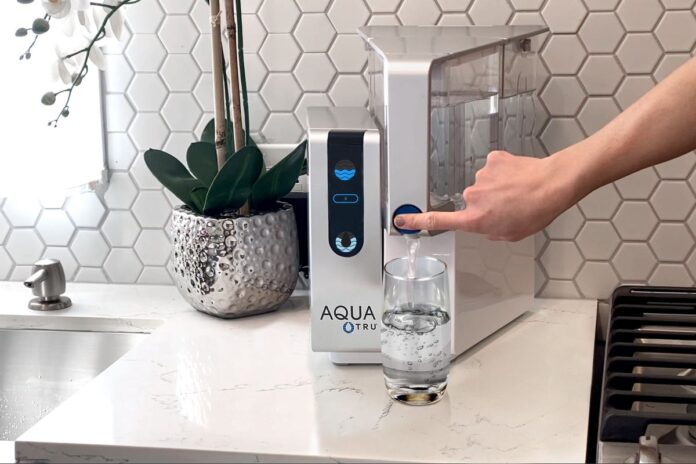In recent years, reverse osmosis has become the go-to choice for most homeowners. In fact, it’s now so versatile that even renters are joining the party. At first, you may feel confused by the term “reverse osmosis” since it does sound somewhat complicated. For this reason, the purpose of this article is to get you acquainted with the primary types of reverse osmosis systems.
Once you have the chance to get an idea of what’s available, you’ll be able to match the right system to your needs. Plus, you’ll be less intimidated by the term “reverse osmosis.” Because it’s really just a powerful water filter that does a much better job than a Brita.
1. Under-Sink RO System

One abbreviation that you’ll see for reverse osmosis is “RO.” Therefore, the two terms are interchangeable. Firstly, an under-sink system is the most common residential system available. This type of system features a series of “stages” or water filters that treat your water before it reaches your glass.
Like all RO systems, an under-sink system features an RO membrane. The membrane is the filtration stage that provides “ultrafiltration.” In other words, the RO membrane removes everything from your tap water, including contaminants and minerals.
Most under-sink systems are between four and six stages. Typically, in addition to the RO membrane, there are carbon and sediment filters. Finally, this type of system usually features a small holding tank to draw your filtered water from.
2. Countertop Reverse Osmosis System
Next, there’s the countertop reverse osmosis system. Comparatively, this type of system is newer than a traditional under-sink model. Clearly, the advantage of a countertop system is for renters and people who aren’t very handy. Unlike an under-sink system, there’s no need to make any modifications to your existing plumbing or to crawl beneath your sink.
Rather, a countertop system conveniently churns out filtered RO water right on your counter. This type of system usually features a built-in pump and an onboard filtered water tank. Alternatively, there are also systems that use a faucet diverter valve.
With this type of system, you flip the valve to point your tap water through the system to get filtered water. The disadvantages of this type of system are no onboard filtered water tank, and it usually creates a lot of wastewater.
3. Tankless RO System

The newest type of reverse osmosis system is the tankless variety. Usually, this type of system installs neatly below your sink in an all-in-one package. First, you’ll find that this system requires a lot less space than a standard under-sink system. Second, there’s no need to set aside space for a filtered water holding tank.
Instead, a tankless system serves you RO water on-demand. It achieves this by using an internal pump that pushes your tap water through a larger RO membrane. As a result, you’re able to fill your glass at the sink faster along with large pots when cooking.
When choosing this type of system, it’s important to keep in mind that it does need to be plugged in. Presently, ROanalyst.com provides the most thorough guide to choosing a tankless reverse osmosis system along with helpful reviews of each system.
4. Whole-House Reverse Osmosis System
For homeowners, a whole-house reverse osmosis system is an excellent option. Similar to other whole-house filters, a whole-house RO filter treats all of the water entering your home. Thus, there’s no need to install any additional drinking water filters, shower filters, or any other type of filters since this type of system does everything at the point of entry.
However, it’s not quite as simple as that. Depending on your water, you’ll more than likely need additional filtration stages to treat your water completely. For instance, if you have hard well water, you would also need to filter sediment and pair a whole-house RO system with a water softener for best results.
Lastly, you may also want to add some minerals back to your water for better-tasting drinking water, which can be achieved with an additional mineral filter.
5. RO With Remineralization

Recently, more water filtration companies have begun incorporating re-mineralization stages into their RO systems. Why? Because not everyone is a fan of the taste of plain reverse osmosis water. Since the RO membrane strips mineral pH buffers from water, the filtration process can result in slightly-acidic drinking water.
The solution is to remineralize the filtered RO water through the final stage in the system. Specifically, these mineral filters usually have calcium and magnesium. Additionally, you’ll also find some filters that have calcium, magnesium, and potassium.
When the filtered RO water flows through a remineralization stage, it picks minerals back up that it had lost as it passed through the RO membrane. As a result, the filtered water has a higher pH than plain reverse osmosis water. Ultimately, most people prefer the taste of remineralized RO water because it’s similar to the taste of bottled water.
Since a lot of bottled water is simply remineralized RO water, you’re essentially recreating this process on a smaller scale inside your home.
Closing Words
At this point, you’ve gained the basic knowledge you need to understand the different types of reverse osmosis systems. Of course, to gain a deeper understanding, you’ll want to dive deeper into the subject. Yet, now you know which type(s) of system suits your needs.
For instance, if you’re a homeowner, then an under-sink or whole-house system are your best bets. For renters who don’t want to make any modifications to plumbing, a countertop system is a way to go. Regardless, always make sure that the water filtration system you choose has a reverse osmosis membrane.
The RO membrane is the backbone of any RO system. Without it, you’re not getting true ultrafiltration that removes all water contaminants at impressive rates. In addition to the RO membrane, you’ll also find pre and post-carbon filters along with sediment filtration.









